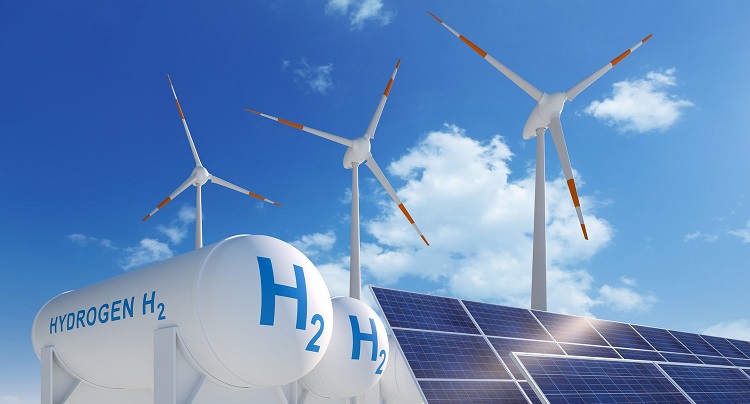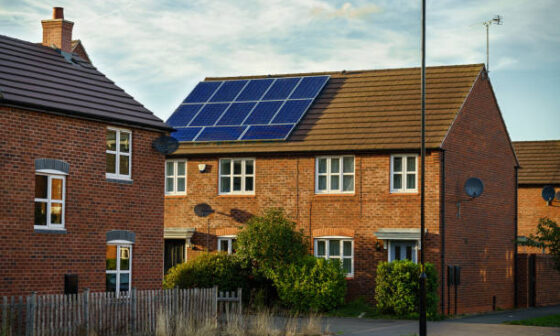
In an era of growing concern over climate change, energy security, and the rising cost of electricity, innovative solutions are essential for creating sustainable and resilient energy systems. Among these, hydrogen microgrids are emerging as a transformative technology that holds the promise of revolutionising residential energy independence.
What Are Hydrogen Microgrids?
Hydrogen microgrids are decentralised energy systems that generate, store, and distribute energy locally using hydrogen as a key energy vector. Unlike traditional grids that rely heavily on centralised power plants and long-distance transmission lines, microgrids are smaller, self-sufficient networks. They typically integrate renewable energy sources such as solar panels or wind turbines with hydrogen production, storage, and fuel cells.
The cornerstone of a hydrogen microgrid is the electrolyser, a device that uses electricity to split water into hydrogen and oxygen. When powered by renewable energy, this process produces green hydrogen—a clean and sustainable fuel.
The hydrogen can then be stored and later converted back into electricity via fuel cells, ensuring a reliable energy supply even when renewable sources are intermittent.
Advantages of Hydrogen Microgrids for Residential Use
1. Energy Independence
Hydrogen microgrids enable homeowners to produce and store their own energy, reducing reliance on external electricity providers. This decentralised model empowers communities, particularly in remote areas where traditional grid connections are unreliable or prohibitively expensive.
2. Environmental Benefits
By integrating renewable energy sources and using green hydrogen, hydrogen microgrids significantly reduce greenhouse gas emissions. They offer a cleaner alternative to fossil fuels and help mitigate the environmental impacts of energy consumption.
3. Resilience and Reliability
Unlike traditional grids that are vulnerable to outages from natural disasters or cyberattacks, hydrogen microgrids offer enhanced resilience. Stored hydrogen ensures a continuous energy supply, even during prolonged periods of low renewable energy generation.
4. Scalability and Flexibility
Hydrogen microgrids can be tailored to suit the specific needs of individual households or entire communities. Their modular nature allows for easy scaling, making them an adaptable solution for diverse energy demands.
The Role of Technology
Electrolysis and Hydrogen Storage
Electrolysers are at the heart of hydrogen microgrids. Advances in proton exchange membrane (PEM) and solid oxide electrolyser technologies have improved efficiency and reduced costs, making hydrogen production more viable for residential applications. Hydrogen storage systems, such as compressed tanks or metal hydrides, ensure energy is available when needed, bridging the gap between production and consumption.
Fuel Cells
Fuel cells convert stored hydrogen back into electricity with high efficiency and minimal environmental impact. Proton exchange membrane fuel cells (PEMFCs) are particularly suited for residential use due to their compact size, quiet operation, and ability to ramp up quickly to meet fluctuating energy demands.
Integration with Renewables
Hydrogen microgrids synergise with renewable energy systems, balancing supply and demand. For instance, excess electricity generated by solar panels during the day can produce hydrogen, which is then stored and used to generate electricity at night or during cloudy periods.
Challenges and Barriers to Adoption
While hydrogen microgrids offer numerous benefits, several challenges must be addressed for widespread adoption.
Cost
The high upfront costs of electrolysers, hydrogen storage systems, and fuel cells remain a significant barrier. However, ongoing advancements and economies of scale are expected to drive down costs over time.
Efficiency Losses
The process of converting electricity to hydrogen and back to electricity involves energy losses. Improving the efficiency of each stage is critical to maximising the overall performance of hydrogen microgrids.
Infrastructure
Developing the necessary infrastructure for hydrogen production, storage, and distribution at a residential scale is a complex and resource-intensive task. Government support and private-sector investment will be essential in overcoming these hurdles.
Public Awareness and Acceptance
Many homeowners are unfamiliar with hydrogen technology and may be hesitant to adopt it. Education and outreach efforts are vital to building trust and confidence in hydrogen microgrids as a reliable and safe energy solution.
Policy and Market Drivers
Governments worldwide are recognising the potential of hydrogen in achieving carbon neutrality and are implementing policies to support its development. Incentives such as subsidies for green hydrogen production, tax credits for residential hydrogen systems, and funding for research and development are accelerating progress in this field.
Private-sector involvement is also growing, with companies investing in innovative hydrogen technologies and forming partnerships to create integrated solutions. These collaborations are essential for driving market adoption and making hydrogen microgrids a mainstream residential energy option.
The Future of Residential Energy
Hydrogen microgrids represent a pivotal step towards a more sustainable and resilient energy future. By enabling energy independence, reducing emissions, and enhancing grid resilience, they align with the global transition to clean energy systems. As technology continues to advance and costs decline, hydrogen microgrids have the potential to become a cornerstone of residential energy strategies worldwide.


